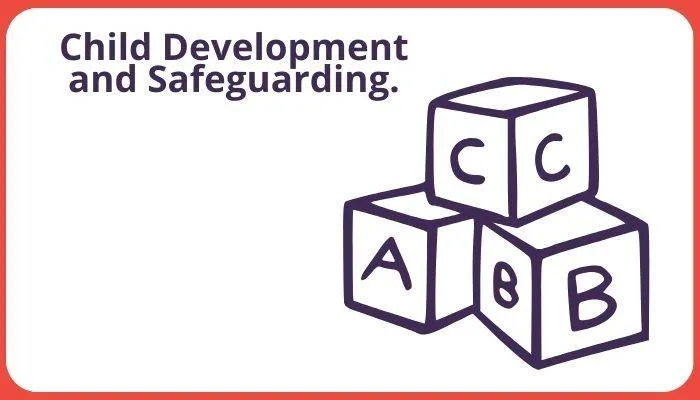Every child's well-being matters.
Types of Abuse Articles
Quick Access
Abuse of Authority
Abuse of Discretion
Abuse of Power
Behavioural Indications
Breast Ironing
County Lines
Cultural Differences (Physical Abuse)
Domestic Abuse
Economic Abuse
Emotional Signs
Exposure to Substance Abuse
Failure to Thrive
Female Genital Mutilation (FGM)
Forced Marriage
Hate Crimes & Targeted Harassment
Impact of Domestic Violence
Impact of Environment
Impact on Development
Institutional Abuse
Isolation
Modern Slavery
Neglect
Online Abuse
Parental Behaviours
Physical Abuse
Radicalisation
Religious Abuse
Restraint
Sexual Abuse
Types of Abuse
Witnessing Domestic Abuse

What indicators might present concerning the child's development and progress if they were being abused?
Unexplained Injuries:
Injuries like bruises or burns without clear explanations can be a cause for concern, especially if they are recurring or the child does not receive appropriate medical care.
Sudden Changes in Behaviour:
Pay attention to abrupt behavioural changes, such as increased quietness, aggression, or deviations from their usual demeanour. Fear of specific individuals or reluctance to be alone with someone should prompt further investigation.
Emotional Signs:
Watch for signs of sadness, fear, or extreme mood swings. A child appearing down, anxious, or lacking confidence may be experiencing emotional distress.
Developmental Milestones:
If a child is not meeting age-appropriate developmental milestones, it could indicate difficulties at home and may signal a need for additional support.
Social Interaction:
Observe how a child interacts with others. Struggling to make friends, aggression, excessive shyness, or avoiding eye contact may indicate underlying issues.
Personal Hygiene and Health:
Poor personal hygiene, inappropriate clothing, or untreated health problems can be signs that a child is not receiving the necessary care.
Sexual Behaviour and Regression:
Knowledge or interest in inappropriate sexual behaviour, unusual play, or drawings may be concerning. Regression to behaviours from a younger age or discomfort with particular body parts warrants investigation.
Educational Challenges:
Problems with attendance, concentration, or lack of parental involvement in education may point to home challenges requiring attention.
AUTHOR:- Iona has nearly 10 years of experience supporting nurseries and childminders in curriculum planning, leadership, and safeguarding. Her writing is informed by public information and sector insight, aiming to provide accessible, practical support for professionals working with children. She is part of the On the Button team, helping deliver Well-being, Safeguarding and Complaint Management Software that empowers practitioners to identify concerns early and act confidently.
On the Button provides innovative software tailored to the needs of the early years sector, with a strong focus on EYFS well-being and early years safeguarding. Our tools help senior practitioners to confidently track concerns, maintain robust records, and respond effectively — all while meeting statutory guidance. From early years complaint management to team-wide safeguarding alerts, our platform puts children's safety and emotional health first.

Quick Access
Abuse of Authority
Abuse of Discretion
Abuse of Power
Behavioural Indications
Breast Ironing
County Lines
Cultural Differences (Physical Abuse)
Domestic Abuse
Economic Abuse
Emotional Signs
Exposure to Substance Abuse
Failure to Thrive
Female Genital Mutilation (FGM)
Forced Marriage
Hate Crimes & Targeted Harassment
Impact of Domestic Violence
Impact of Environment
Impact on Development
Institutional Abuse
Isolation
Modern Slavery
Neglect
Online Abuse
Parental Behaviours
Physical Abuse
Radicalisation
Religious Abuse
Restraint
Sexual Abuse
Types of Abuse
Witnessing Domestic Abuse

What indicators might present concerning the child's development and progress if they were being abused?
Unexplained Injuries:
Injuries like bruises or burns without clear explanations can be a cause for concern, especially if they are recurring or the child does not receive appropriate medical care.
Sudden Changes in Behaviour:
Pay attention to abrupt behavioural changes, such as increased quietness, aggression, or deviations from their usual demeanour. Fear of specific individuals or reluctance to be alone with someone should prompt further investigation.
Emotional Signs:
Watch for signs of sadness, fear, or extreme mood swings. A child appearing down, anxious, or lacking confidence may be experiencing emotional distress.
Developmental Milestones:
If a child is not meeting age-appropriate developmental milestones, it could indicate difficulties at home and may signal a need for additional support.
Social Interaction:
Observe how a child interacts with others. Struggling to make friends, aggression, excessive shyness, or avoiding eye contact may indicate underlying issues.
Personal Hygiene and Health:
Poor personal hygiene, inappropriate clothing, or untreated health problems can be signs that a child is not receiving the necessary care.
Sexual Behaviour and Regression:
Knowledge or interest in inappropriate sexual behaviour, unusual play, or drawings may be concerning. Regression to behaviours from a younger age or discomfort with particular body parts warrants investigation.
Educational Challenges:
Problems with attendance, concentration, or lack of parental involvement in education may point to home challenges requiring attention.
AUTHOR:- Iona has nearly 10 years of experience supporting nurseries and childminders in curriculum planning, leadership, and safeguarding. Her writing is informed by public information and sector insight, aiming to provide accessible, practical support for professionals working with children. She is part of the On the Button team, helping deliver Well-being, Safeguarding and Complaint Management Software that empowers practitioners to identify concerns early and act confidently.
On the Button provides innovative software tailored to the needs of the early years sector, with a strong focus on EYFS well-being and early years safeguarding. Our tools help senior practitioners to confidently track concerns, maintain robust records, and respond effectively — all while meeting statutory guidance. From early years complaint management to team-wide safeguarding alerts, our platform puts children's safety and emotional health first.


What indicators might present concerning the child's development and progress if they were being abused?
Unexplained Injuries:
Injuries like bruises or burns without clear explanations can be a cause for concern, especially if they are recurring or the child does not receive appropriate medical care.
Sudden Changes in Behaviour:
Pay attention to abrupt behavioural changes, such as increased quietness, aggression, or deviations from their usual demeanour. Fear of specific individuals or reluctance to be alone with someone should prompt further investigation.
Emotional Signs:
Watch for signs of sadness, fear, or extreme mood swings. A child appearing down, anxious, or lacking confidence may be experiencing emotional distress.
Developmental Milestones:
If a child is not meeting age-appropriate developmental milestones, it could indicate difficulties at home and may signal a need for additional support.
Social Interaction:
Observe how a child interacts with others. Struggling to make friends, aggression, excessive shyness, or avoiding eye contact may indicate underlying issues.
Personal Hygiene and Health:
Poor personal hygiene, inappropriate clothing, or untreated health problems can be signs that a child is not receiving the necessary care.
Sexual Behaviour and Regression:
Knowledge or interest in inappropriate sexual behaviour, unusual play, or drawings may be concerning. Regression to behaviours from a younger age or discomfort with particular body parts warrants investigation.
Educational Challenges:
Problems with attendance, concentration, or lack of parental involvement in education may point to home challenges requiring attention.
AUTHOR:- Iona has nearly 10 years of experience supporting nurseries and childminders in curriculum planning, leadership, and safeguarding. Her writing is informed by public information and sector insight, aiming to provide accessible, practical support for professionals working with children. She is part of the On the Button team, helping deliver Well-being, Safeguarding and Complaint Management Software that empowers practitioners to identify concerns early and act confidently.
On the Button provides innovative software tailored to the needs of the early years sector, with a strong focus on EYFS well-being and early years safeguarding. Our tools help senior practitioners to confidently track concerns, maintain robust records, and respond effectively — all while meeting statutory guidance. From early years complaint management to team-wide safeguarding alerts, our platform puts children's safety and emotional health first.

Quality Early Years Ltd.,
Dickens House,
Guithavon Street,
Witham, Essex,
England, CM8 1BJ
© Quality Early Years Ltd 2025
On the Button are Finalists for 3/3 Early Years Awards!
Find On the Button
on Social Media

